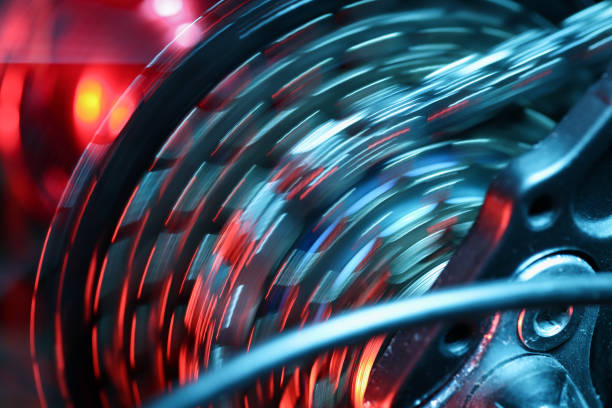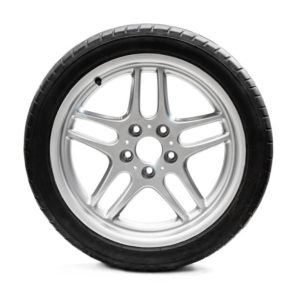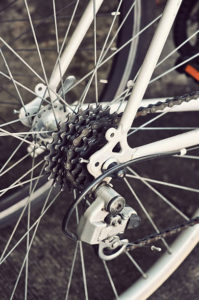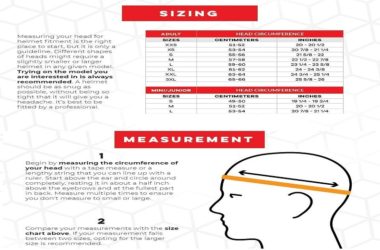Freewheel vs cassette – You’ve probably heard this debate many times by now. The main difference between the two is that freewheel bikes have a chain passing through their drivetrain. While the cassette bikes keep it entirely inside. As you’re about to see, there are pros and cons for both groups of cyclists. But if you’re looking for a bike with unmatched pedaling efficiency, don’t worry we’ve got your back.The difference between Freewheel vs Cassette is choosing the best one.
Freewheels and cassettes are two types of bicycle drivetrain components. That is used to transfer power from the pedals to the rear wheel.
These components help you choose how your bike will operate, so it’s important to understand how each one works before making a purchase. Freewheels were common on bikes until cassettes in the 1980s replaced them.
But they still have their place today. In this guide, we’ll explain how freewheels work and compare them against cassettes to decide which is suitable for your ride!
Table of Contents
Freewheel vs Cassette
Freewheels and cassettes are two types of drivetrains used in bicycles. They both have the same purpose: transmitting power from the pedals to the wheel. However, they work differently since they have different numbers of gears. Freewheels are used on single-speed bicycles, whereas cassettes are used on multi-speed bikes.
A freewheel is a gearbox that has no chain or cogs. It’s an internal gear system that is accessed by hand. It simply takes a small crank and turns a large gear with multiple teeth that mesh with smaller gears inside of it. The entire process is controlled by your leg muscles, which turn the crank and twist the gear at the same time, allowing you to pedal faster without changing gears.
Freewheels have one advantage over cassettes: they’re quieter and require less maintenance than cassettes because they don’t have any ratcheting mechanism like most cassette systems do (you won’t need a tool to tighten or loosen your freewheel). However, they are less efficient than cassettes because they make more noise while shifting up or down depending on how many teeth there are in each gear.
How does a freewheel work?
A freewheel is a device that allows you to coast. It’s attached to the rear hub and drives the chain. But when you stop pedaling or backpedal, it will allow your rear wheel to spin freely. This allows riders to slow down while maintaining their momentum to speed up again at any time without putting in as much effort.
The most common freewheels are single-speed units with a design. It allows them to change out or replaced bikes with enough clearance between components (such as road bikes). There are also multi-speed versions that allow riders greater control over their speed. It makes them more versatile for riding different types of terrain.
How does a cassette work?
A cassette is a group of cogs, or sprockets, that mounts on a freehub body. The freehub body is pressed into the hub and contains bearings in which the axle rotates. There are two different types of cassettes: Shimano/SRAM and Campagnolo. Both work the same way, but they use different spline patterns to lock onto their respective hubs.
The cassette cogs are carried together by a lockring that screws onto both ends of the cassette with its teeth pressing against each cog individually for traction.
The key difference between cassettes and freewheels is their design. At the same time, both have similar functions (to deliver power from your legs to your gear system). But they do so differently allowing you to choose which works best for you!
Which is better?
When choosing between freewheel vs cassette, the right choice depends on your needs. On the one hand, freewheels are more durable than cassettes because they have no moving parts and don’t wear out as quickly.
On the other hand, cassettes are more versatile than freewheels in that they can use with any hub. Freewheels only work with fixed-gear hubs (which have only one gear).
The cost is also a factor: both cost several hundred dollars new if purchased from an online retailer like Amazon or REI. The individual parts like screws can be much cheaper to buy at your local bike shop versus buying them all-new from an online store.
This makes replacing worn-out pieces easier for those on a budget. Who still wants high-quality components when building their custom bikes from scratch or upgrading their current ones.
Difference between freewheel and cassette?
When choosing between a freewheel and a cassette, it’s important to know their differences. It would help to consider both pros and cons to make an informed decision.
A freewheel is often referred to as a rear hub with internal gears mounted on an axle. It has its gear ratio, which means it doesn’t need any other parts as a cassette does to work correctly. However, if your bike uses another setup (such as 3×9 gearing or 1×10), this option may not be available for you!
On the other hand, cassettes are typically used together with derailleur systems because they contain multiple sprockets (gear teeth) inside them, which can be shifted up or down depending on how fast or slow we want our pedaling. Cadence while riding out there on those trails!
-
Lockring Threading
Freewheels have a threadless lockring while Cassettes have a threaded lockring
-
Cog Compatibility, Compatibility Threading, and Spline System
Here we will discuss the cog compatibility in freewheel Vs Cassette. As you should already know, freewheels and cassettes have different threading systems. While the freewheel uses a threaded lockring, the cassette uses a spline system.
This is important because they both have their pros and cons in terms of durability. The threaded lockrings are more durable than splines but not as strong as an old-school chainring bolt (though these don’t exist anymore). However, they’re also pretty easy to screw onto your hub if you have a multi-tool with some handy sockets (or a dedicated wrench).
In contrast, cassettes use this newfangled “spline” system that’s supposedly much stronger than anything else. But it can be hard to remove once installed on your hub/spider!
-
Ease of Use and Maintenance.
The third difference between freewheel and cassette is the ease of use and maintenance. As we described earlier, a freewheel is a one-piece unit that contains your gears and bearings but no cogs. The cogs attach to the wheel hub to move your bike forward. With cassettes, you can easily remove each cog individually without taking apart the whole assembly (and it’s easy to replace individual cogs). With freewheels, it’s not as simple because they have more components inside them than a cassette does.
There are also differences in how easy they are for you or someone else who may not know much about bikes at all. This will impact how quickly you can change out parts if something goes wrong with one component or another during an outing on your bike!
-
Cost, Weight, and Ease of Replacement
- Freewheels are cheaper than cassettes
- Freewheels are lighter than cassettes
- Freewheels are more accessible to replace than cassettes
- Cassettes are more durable than freewheels
- Cassettes are more expensive than freewheels
- but you can choose the right one for you
There are many types of wheels that you can choose from them like the freewheel Vs Cassette, but the most popular one is the freewheel. Freewheels come in different sizes and materials, so it’s best to read more about them before deciding.
Conclusion
There are many varieties of freewheels and cassettes, but they all have a few things in common. They both allow you to shift gears without pedaling and come with different gear ratios depending on the number of cogs in each system. Freewheels typically only have two or three cogs, while cassettes can have up to 12!
But there are still other factors that may influence your decision between these two options like price, weight, and ease of use or replacement parts availability. So if you’re looking for something new, now is an ideal time since both options are available on modern bikes!






